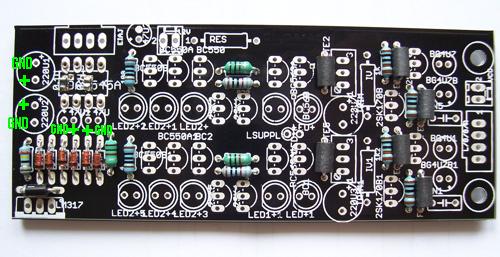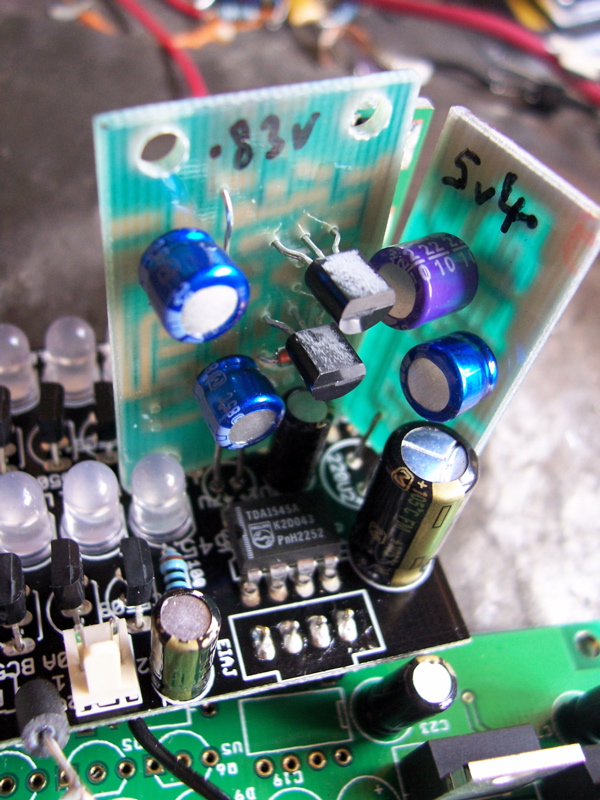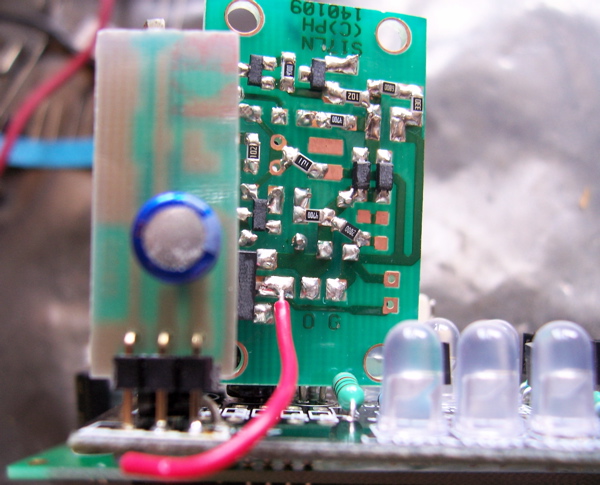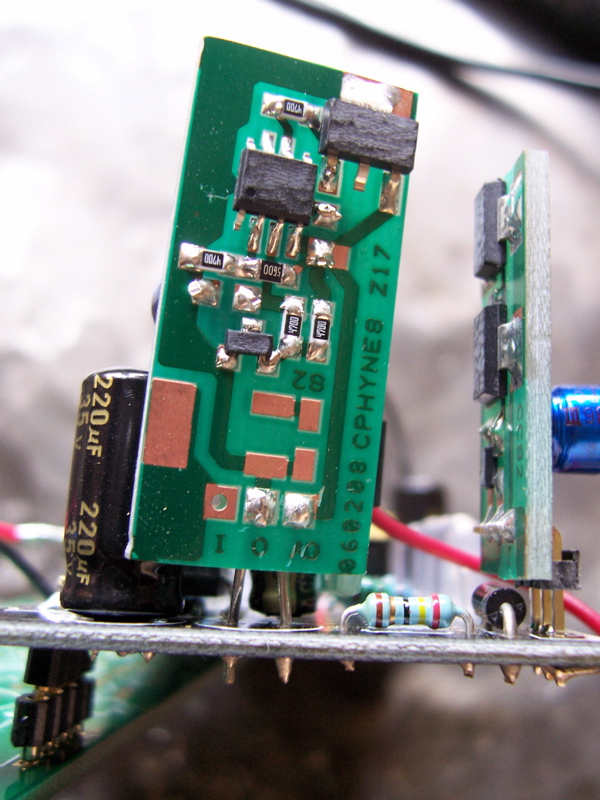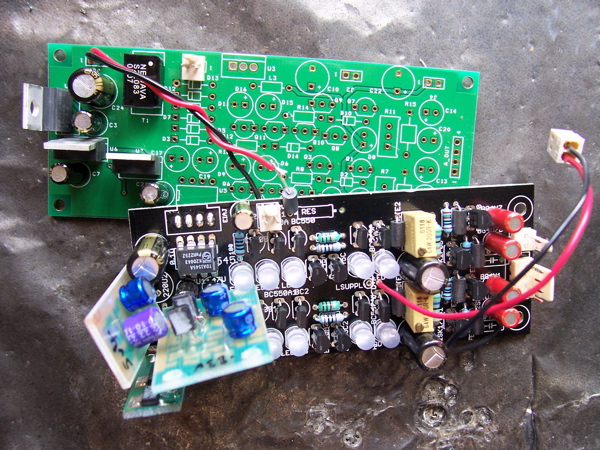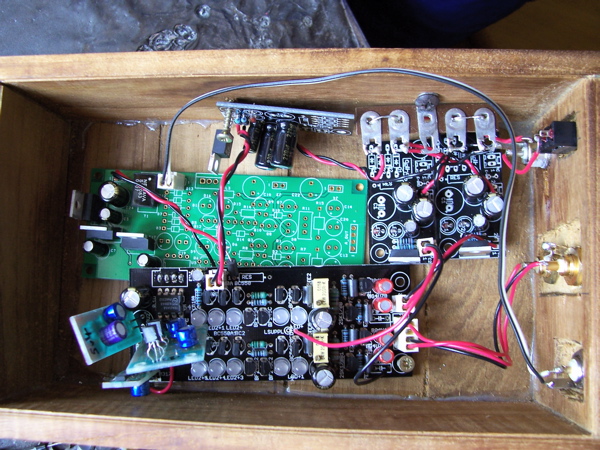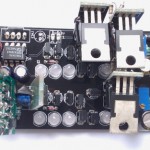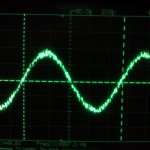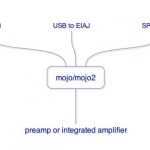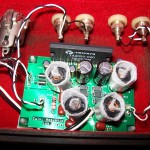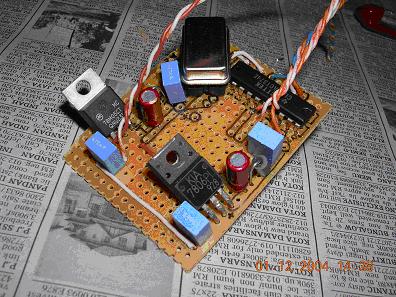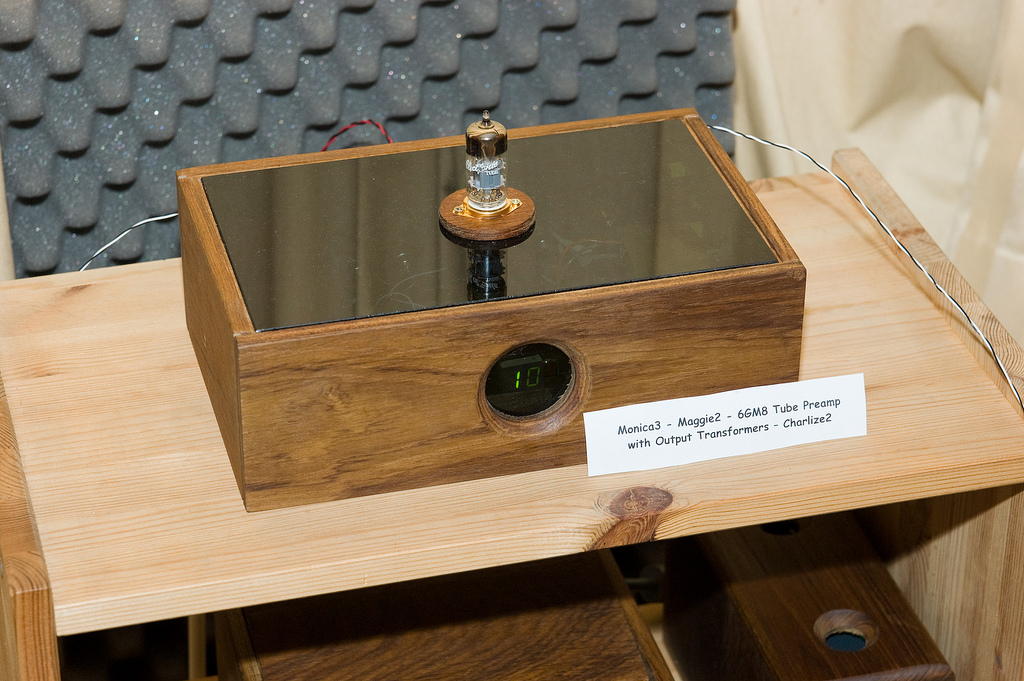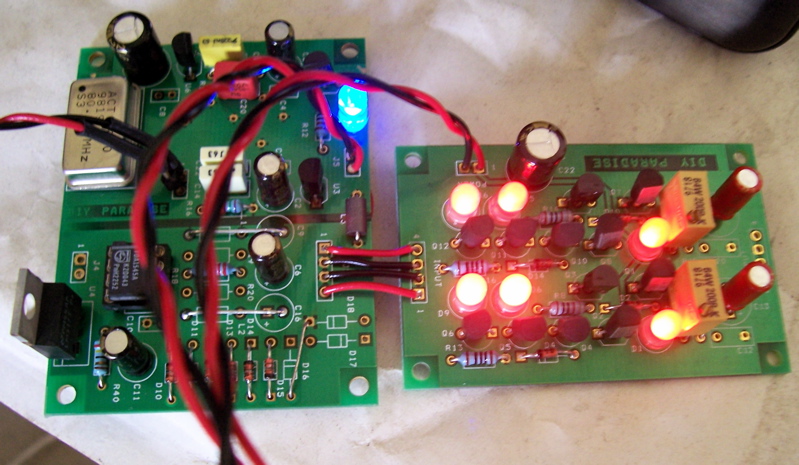Getting more magic, more mojo, from your Monica + mojo isn’t difficult at all. All you need is some regulators and some solder grease…
There are 2 Paul Hynes’ regulators we want to introduce here. Well, if you include the CCS, then there’s 3.
First, there’s the 5.45V regulator for TDA1545A VDD. Then there’s the 0.83V regulator for the TDA1545A VREF. Lastly there’s the CCS2 for feeding the 5.45V regulator.

So first step is to identify how to incorporate all these regs. Ideally we would like to place them as close as possible to the chip which we want to regulate its voltage. So in this case, we want to place them as close as possible to the TDA1545A chip, yet without leaving a mess of spaghetti wiring. (pray hard…)
Here’s what I did. Found that the best place to wire in the 5.45V reg is on the PCB where the 220uF cap is supposed to go. If you have both caps installled, then you could solder them at the bottom of the PCB.
Ditto to the 0.83V reg, best place is on the PCB where the 47uF caps reside. Note polarity.
Now there are many ways you could integrate these regs in. One way is to cut the PCB trace, disconnecting the string of diodes to VDD but if you don’t want to, you could desolder the 1N4148 diodes (all or at least both at each end).
The Paul Hynes regs’ pins are labeled I(nput), O(utput) and G(round). Descriptive enough? When mounting the 0.83V reg, I found it’s easier to desolder the I lead and wire it this way. This goes to the CCS2 input.
More pics here.
Aha… Integrated with Monica SPDIF-EIAJ module. Note that power for the module is taken from this mojo board. For better isolation, i put in a ferrite bead too.
Hey! Since we are on a roll, might as well add 2 more regs! Now there’s a reg for each channel of the SS I/V stage as well. [These new regs will be called ACDC in line with our preference to name our minor products over rock bands.] In order to do this, don’t install any jumper on LSUPPLY.
And so that’s what I did. So we now have regulators for every stage of Monica.
Err, this guide helps explain better how to power the individual stages of mojo.
And what does all this hard work give you?
Aye caramba! Muchhhhhhhh better sonics! SE-PA-RA-TION is superb!
Since I’m such a nice guy, for those who are more budget conscious, you could use AudioSlave here and retain the original CCS structure. You’ll need to break the PCB trace linking the string of diodes to TDA1545 VDD (pin 5) though. Err, with AudioSlave, you could go up to 25VDC.
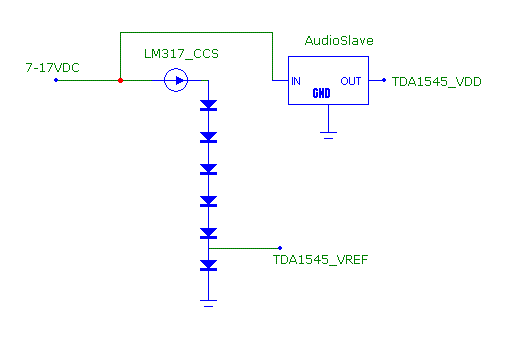
There you go! Have fun!
